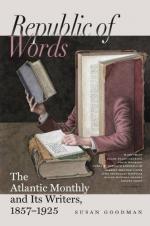XI.
FIESOLE.
Here sits on her hill the weird old Etrurian nurse of Florence, withered, superannuated, feeble, warming her palsied limbs in the sun, and looking vacantly down upon the beautiful child whose cradle she rocked. Fiesole is perhaps the oldest Italian city. The inhabitants of middle and lower Italy were Pelasgians by origin, like the earlier races of Greece. The Etrurians were an aboriginal stock,—that is to say, as far as anything can be definitely stated regarding their original establishment in the peninsula; for they, too, doubtless came, at some remote epoch, from beyond the Altai mountains.
In their arts they seem to have been original,—at least, until at a later period they began to imitate the culture of Greece. They were the only ancient Italian people who had the art-capacity; and they supplied the wants of royal Rome, just as Greece afterwards supplied the republic and the empire with the far more elevated creations of her plastic genius.
The great works undertaken by the Tarquins, if there ever were Tarquins, were in the hands of Etrurian architects and sculptors. The admirable system of subterranean drainage in Rome, by which the swampy hollows among the seven hills were converted into stately streets, and the stupendous cloaca maxima, the buried arches of which have sustained for more than two thousand years, without flinching, the weight of superincumbent Rome, were Etrurian performances, commenced six centuries before Christ.
It would appear that this people had rather a tendency to the useful, than to the beautiful. Unable to assimilate the elements of beauty and grace furnished by more genial races, this mystic and vanished nation was rather prone to the stupendously and minutely practical, than devoted to the beautiful for its own sake.
At Fiesole, the vast Cyclopean walls, still fixed and firm as the everlasting hills, in their parallelopipedal layers, attest the grandeur of the ancient city. Here are walls built, probably, before the foundation of Rome, and yet steadfast as the Apennines. There are also a broken ring or two of an amphitheatre; for the Etrurians preceded and instructed the Romans in gladiatorial shows. It is suggestive to seat one’s self upon these solid granite seats, where twenty-five hundred years ago some grave Etrurian citizen, wrapped in his mantle of Tyrrhenian purple, his straight-nosed wife at his side, with serpent bracelet and enamelled brooch, and a hopeful family clustering playfully at their knees, looked placidly on, while slaves were baiting and butchering each other in the arena below.




